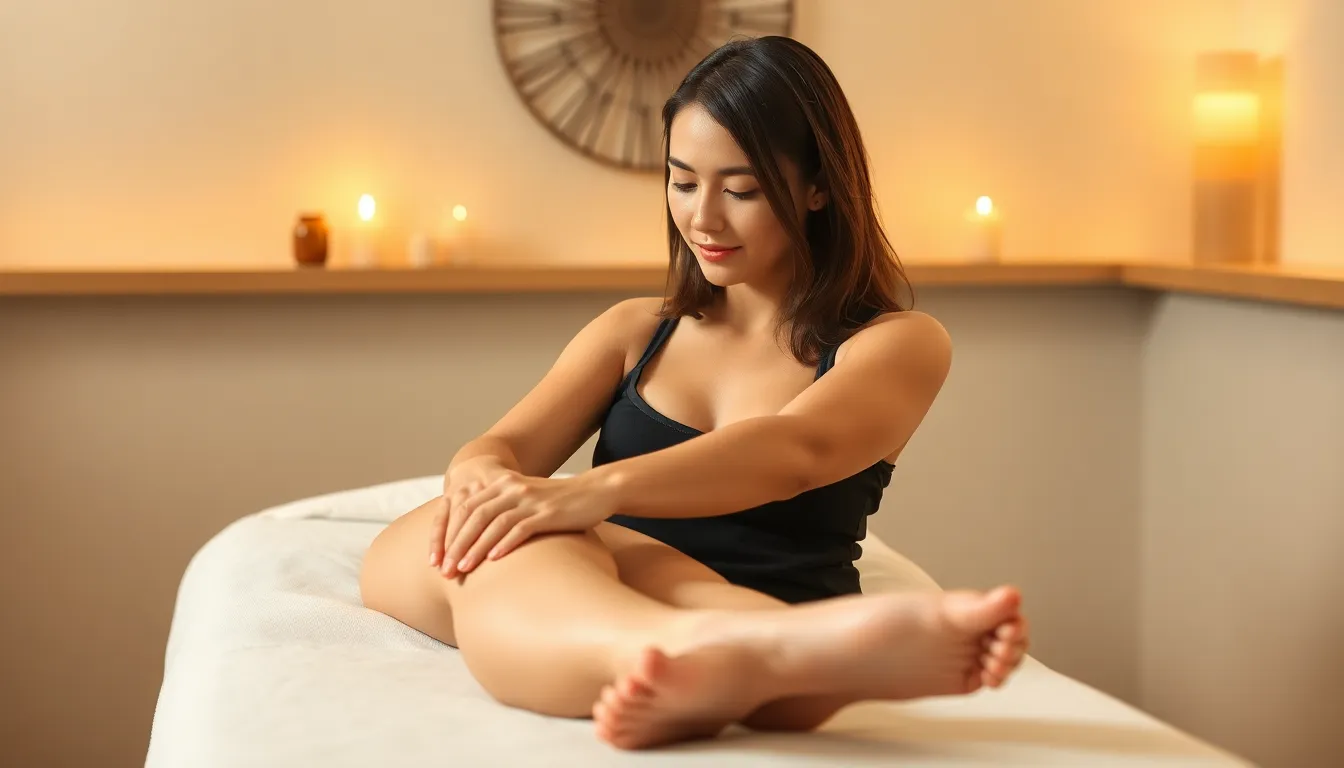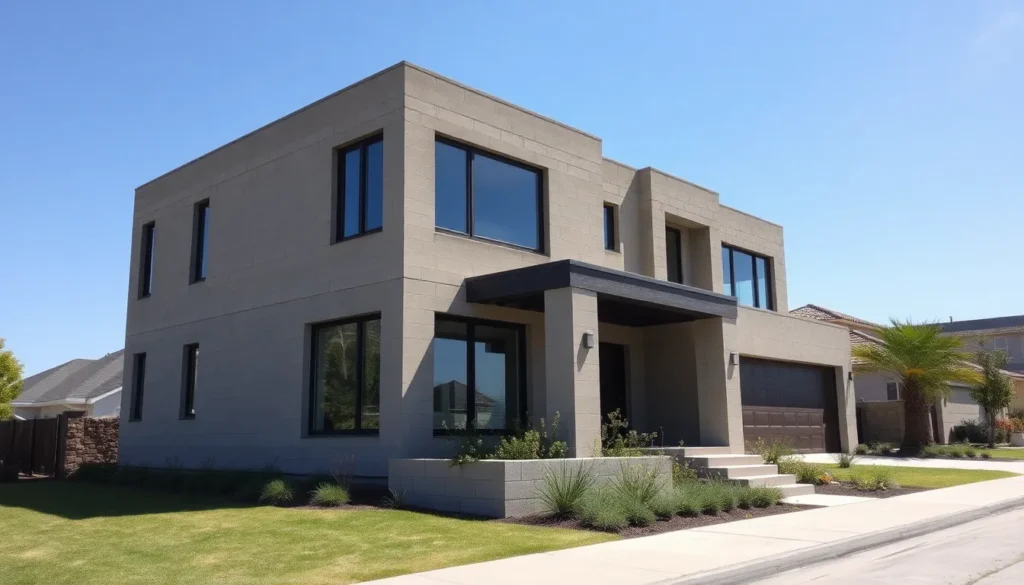Feeling like your legs are carrying the weight of the world? It might be time to give your lymphatic system a little TLC. This unsung hero of the body is responsible for flushing out toxins and keeping things flowing smoothly. When lymphatic drainage slows down, it can lead to swelling and discomfort, making those legs feel like lead.
Table of Contents
ToggleUnderstanding Lymphatic Drainage
The lymphatic system plays a vital role in overall wellness, particularly regarding leg health. Understanding its function highlights why proper lymphatic drainage matters.
Importance of Lymphatic System
Lymphatic vessels transport lymph fluid, which contains waste, debris, and immune cells. This fluid supports the body’s ability to fight off infections. Additionally, it aids in removing toxins, contributing to clearer and healthier skin. Supporting the lymphatic system can reduce swelling and discomfort in the legs. A well-functioning system maintains fluid balance and promotes circulation. Individuals seeking to enhance their leg comfort should prioritize lymphatic health.
Common Issues with Lymphatic Drainage
Sluggish lymphatic drainage can lead to several issues. Swelling in the legs often occurs when lymph fluid accumulates in tissues. Discomfort, heaviness, and even skin changes may arise due to poor drainage. Factors contributing to these problems include sedentary lifestyles, obesity, and certain medical conditions. Recognizing signs of lymphatic stagnation, such as swelling or aching, is essential for addressing potential health concerns. Addressing these issues can significantly improve overall leg well-being.
Effective Techniques to Improve Lymphatic Drainage in Legs

Improving lymphatic drainage in the legs utilizes various techniques, each offering unique benefits.
Manual Lymphatic Drainage Massage
Manual lymphatic drainage massage promotes fluid movement through the lymphatic system. This gentle massage technique targets specific areas, stimulating lymph flow and reducing swelling. A trained therapist performs this massage, applying light pressure and rhythmic movements. Sessions usually last between 30 to 60 minutes and can significantly relieve discomfort and enhance circulation in the legs.
Exercise and Physical Activity
Regular exercise boosts lymphatic circulation and promotes overall leg health. Engaging in activities like walking, swimming, or cycling for at least 30 minutes daily encourages muscle contractions, which aid lymph fluid movement. Additionally, stretching exercises improve flexibility and enhance blood flow. Low-impact workouts are particularly beneficial, as they help maintain leg mobility without excessive strain.
Compression Therapy
Compression therapy provides targeted support to improve lymphatic drainage. Wearing compression garments, such as stockings or sleeves, applies gentle pressure to the legs, promoting fluid movement towards the lymph nodes. These garments come in various levels of compression, allowing customization based on individual needs. Using compression therapy for several hours daily can effectively reduce swelling and discomfort in the legs.
Lifestyle Changes to Support Lymphatic Health
Lymphatic health relies significantly on daily lifestyle changes. Adopting healthy habits dramatically influences lymphatic drainage.
Hydration and Nutrition
Staying hydrated is essential for effective lymphatic function. Drinking enough water aids lymph fluid’s movement through the body. Consuming nutrient-rich foods enhances the lymphatic system as well. Fresh fruits, vegetables, and whole grains provide essential vitamins and minerals, supporting immune function and detoxification. Reducing sodium intake also helps minimize water retention. Including anti-inflammatory foods like berries, fatty fish, and nuts can also promote better circulation and lymphatic health. Maintaining a balanced diet contributes to overall well-being and enhances lymphatic efficiency.
Elevation of Legs
Elevating the legs improves lymphatic drainage by allowing gravity to assist fluid movement. It encourages fluid backflow towards the heart, reducing swelling and promoting circulation. Keeping legs elevated for 15 to 30 minutes several times a day offers noticeable benefits. Using cushions or reclining in a comfortable position aids this process. Elevation becomes a simple yet effective method for enhancing lymphatic health. Regularly incorporating this practice can lead to reduced discomfort and improved leg health over time.
Natural Remedies and Treatments
Various natural remedies can effectively improve lymphatic drainage in the legs. These treatments often enhance circulation and promote overall wellness.
Essential Oils and Herbal Remedies
Essential oils offer powerful benefits for lymphatic health. Lavender oil, known for its soothing properties, can be used in massages to stimulate lymph flow. Peppermint oil invigorates the body, aiding in circulation. Additionally, herbal remedies such as horse chestnut and ginger contain compounds that reduce inflammation and improve blood flow. Frequent use of these oils diluted in a carrier oil can promote relaxation while encouraging lymphatic drainage.
Homeopathic Solutions
Homeopathic treatments focus on the body’s natural healing processes. Remedies like Apis mellifica and Hamamelis virginiana support vascular health, reducing swelling and discomfort. Regularly using these solutions in conjunction with a healthy lifestyle can enhance the efficacy of lymphatic drainage efforts. Homeopathic solutions are convenient, often available in easy-to-administer forms like pellets or drops, making them accessible for daily use.
Improving lymphatic drainage in the legs is vital for enhancing overall health and comfort. By incorporating techniques like manual lymphatic drainage massage and regular exercise, individuals can significantly boost circulation and reduce discomfort. Compression therapy and lifestyle changes such as staying hydrated and eating a nutrient-rich diet further support lymphatic function.
Natural remedies can also play a role in promoting lymphatic health. Essential oils and herbal treatments offer additional benefits that complement a proactive approach to wellness. Adopting these practices not only alleviates leg discomfort but also fosters a healthier lymphatic system, paving the way for improved vitality and well-being.













